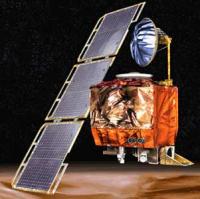NASA criticised for sticking to imperial units
- Metric Tags:
by: NewScientist
Paul Marks
NASA's decision to engineer its replacement for the space shuttle using imperial measurement units rather than metric could derail efforts to develop a globalised civilian space industry, says a leading light in the nascent commercial spaceflight sector.
"We in the private sector are doing everything possible to create a global market with as much commonality and interoperability as possible," says Mike Gold of the US firm Bigelow Aerospace, which hopes to fly commercial space stations in orbit. "But NASA still can't make the jump to metric."
Gold chairs a Federal Aviation Administration working group on commercial spaceflight that is trying to change strict State Department rules affecting civilian spaceflight systems. He sees NASA's decision to use imperial units as the latest blow to hit the sector.
'Clear advantages'
Carol Hockert, head of the weights and measures division at the US National Institute of Standards and Technology in Gaithersburg, Maryland, sees his point. "There are clear advantages to using metric units in terms of global commerce and international research collaborations. And space exploration certainly falls into a category that could benefit," she told New Scientist.
At issue is NASA's Constellation Program, which is intended to replace the space shuttle. It will use new Ares rockets and a crew capsule called Orion to launch astronauts to the International Space Station (ISS) or the moon.
Civilian operators hope to one day pay to use Orion capsules to reach their orbiting structures, or have craft of their own dock with the capsules. So the last thing they want is a measurement units mix-up between their own and NASA's equipment.
Shuttle technology
The sticking point is that Ares is a shuttle-derived design – it uses solid rocket boosters whose dimensions and technology are based on those currently strapped to either side of the shuttle's giant liquid fuel tank.
And the shuttle's 30-year-old specifications, design drawings and software are rooted in pounds and feet rather than newtons and metres.
"The Shuttle and US segments of the ISS were built using the English system of measurements," says NASA spokesman Grey Hautaluoma. "And much of the Ares launch vehicle and Kennedy Space Center ground systems are legacy hardware built in the English system, too."
US law
NASA recently calculated that converting the relevant drawings, software and documentation to the "International System" of units (SI) would cost a total of $370 million – almost half the cost of a 2009 shuttle launch, which costs a total of $759 million. "We found the cost of converting to SI would exceed what we can afford," says Hautaluoma.
"Given these budget constraints and the need for consistent units throughout the Constellation Program lifecycle to minimise risks, and to contribute to mission success, we're revising the previous management directive to a primarily English-units-based program," he says.
That previous directive stems from 2004 when, under continuing pressure from its independent inspector general, NASA agreed to conform with US legislation enacted in 1988 that ordered all government departments to move towards the exclusive use of SI units.
'Problematic mistakes'
In June 2006, when NASA's progress on that looked sluggish, NASA spokesman David Steitz offered New Scientist this update: "NASA is in the process of converting to SI units. However, immediate conversion of systems that are already designed in English units can prove risky and inefficient. The US space program ... will need time to evolve into SI units."
Gold sees the latest announcement as significant backtracking: "The space program is supposed to be about bridging barriers and bringing humanity closer together. Failing to adopt a globally accepted uniform system of measurement seems to fly in the face of that."
"Operating in space while using two different systems of measurement certainly opens the door for problematic mistakes and miscommunications," he adds.
Lost probe
Indeed, NASA lost an unmanned mission owing to a mix-up between metric and imperial units. In September 1999, its $125 million Mars Climate Orbiter probe was destroyed because its attitude-control system used imperial units but its navigation software used metric units. As a result, it was 100 kilometres too close to Mars when it tried to enter orbit around the planet.
Units have also played a role in other spacecraft problems. In 2006, the guidance system on NASA's DART spacecraft went awry and caused it to ram into a military satellite it was merely meant to dock with.
Before DART's launch, NASA found that GPS data on its position was mistakenly being read by its computer in feet. Ironically, correcting this to metres in a simulator resulted in an incorrect change to another parameter that was programmed into the spacecraft – a problem that led to the collision.
Moot point?
"Over the past couple of years, we have worked extensively with NASA while they considered adopting the metric system," says NIST's Hockert. "We stand ready to continue to assist them."
"Using the metric system is certainly the right step in the long-term," says Eric Anderson of Space Adventures, a US firm that arranges trips for space tourists. However, he says he understands NASA's difficulty in the face of limited budgets.
The argument may be moot, however.
Constellation, which was initiated by the Bush administration, may yet be cancelled. Its rationale is currently under examination by an independent commission appointed by the incoming Obama team.
"If the program is cancelled, 'zero' is the same in English and metric," notes Gold.
source: http://www.newscientist.com/article/dn17350-nasa-criticised-for-sticking-to-imperial-units.htm
